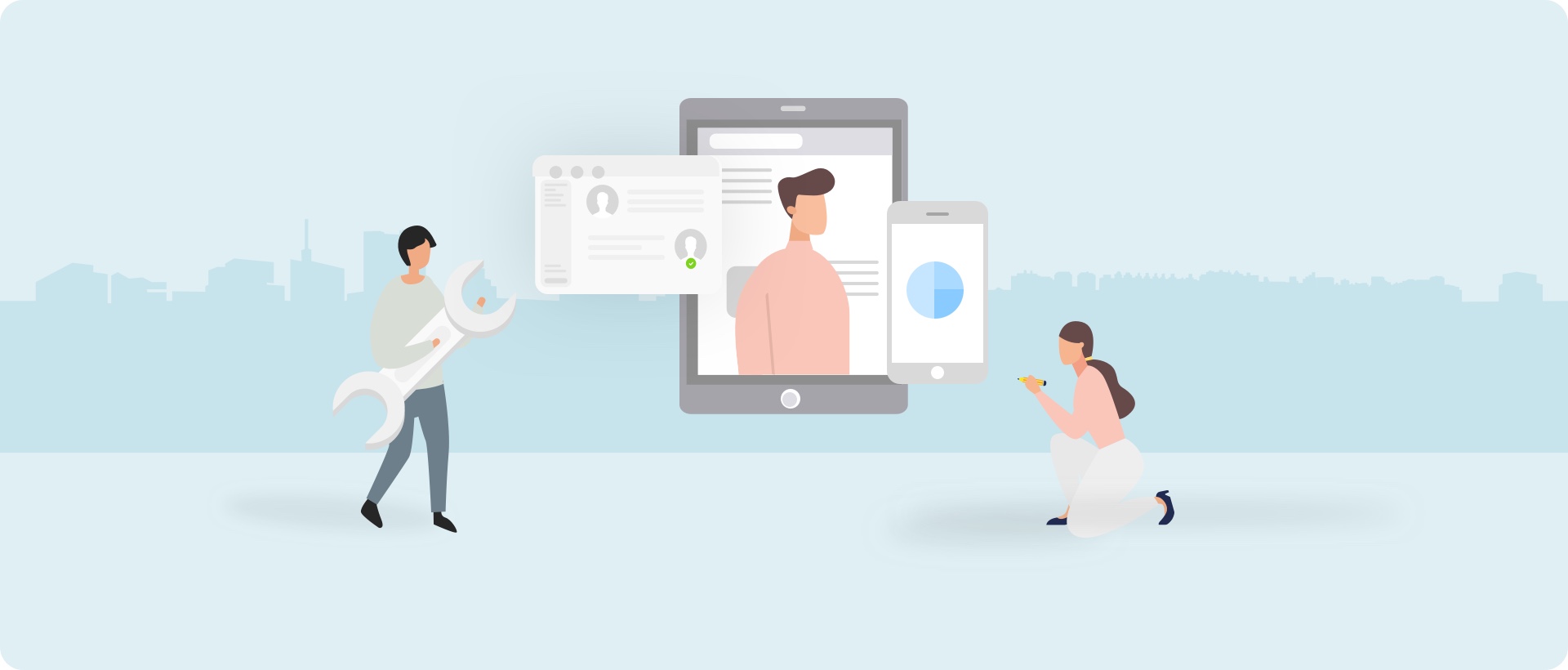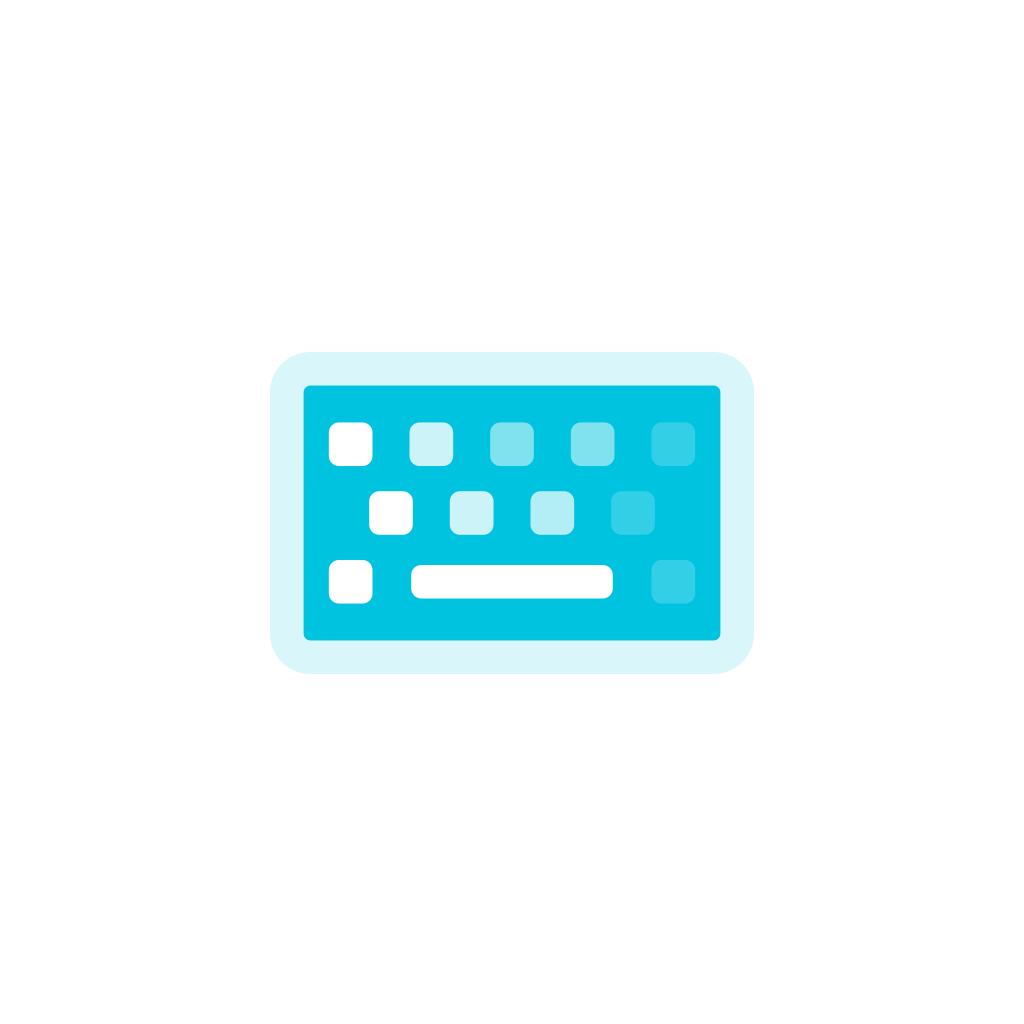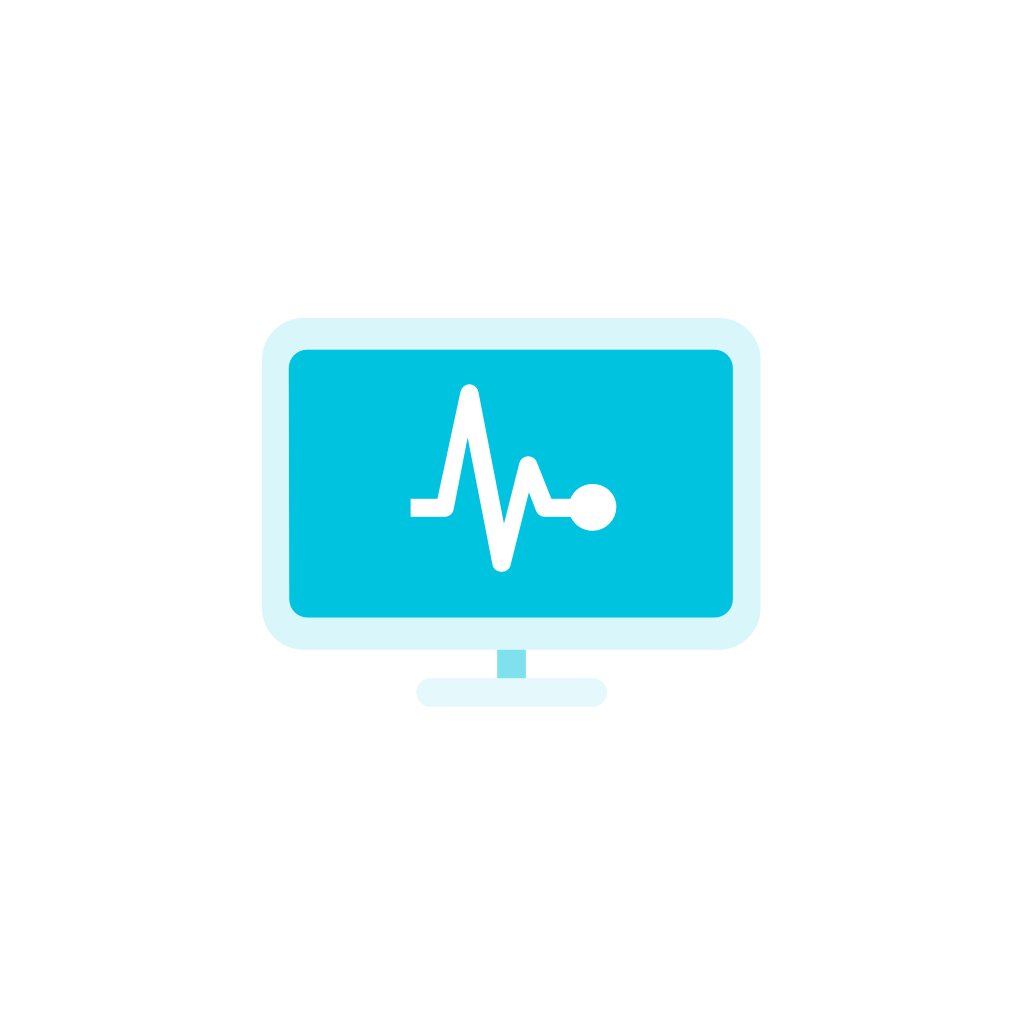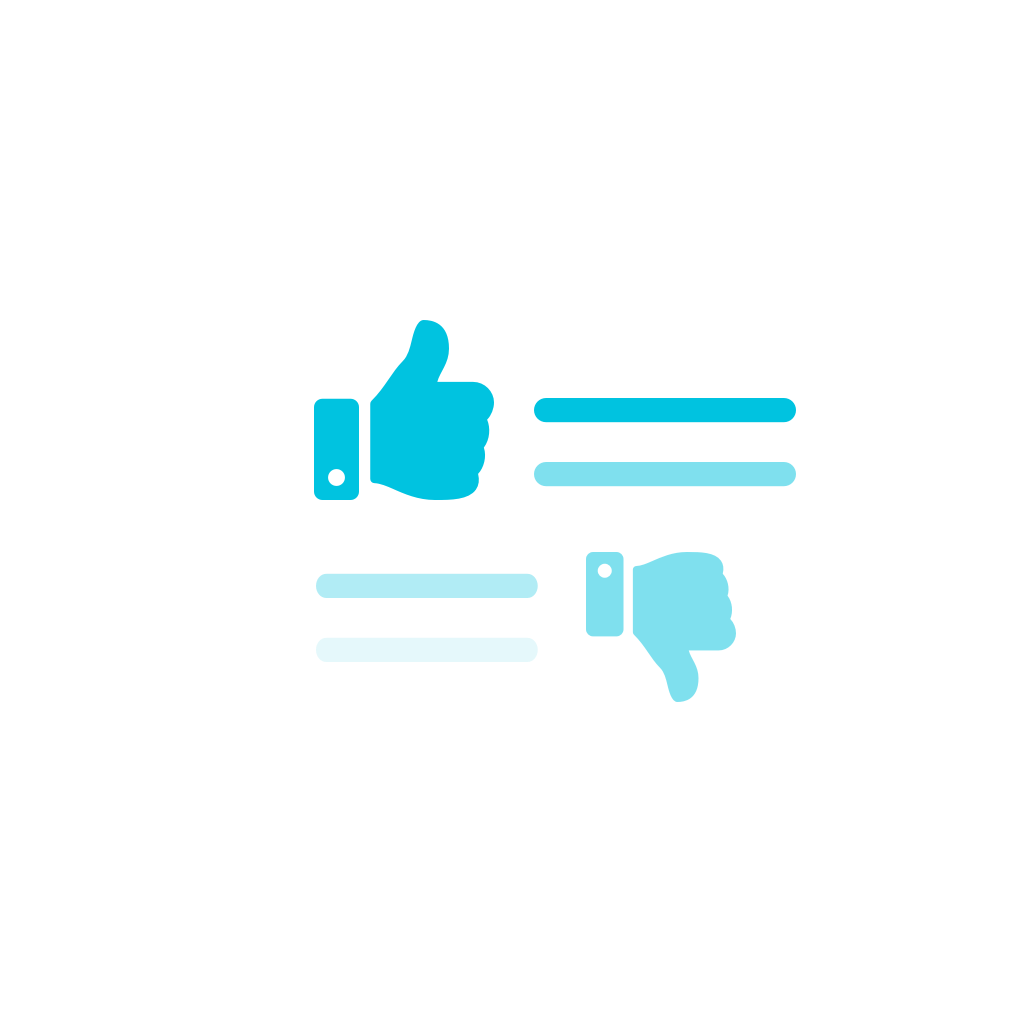More than 500 years ago, Leonardo da Vinci created the first resume ever. Fast forward to 2020, and many of us still use the CV as the primary instrument to make hiring decisions.
That seems a little weird, doesn’t it?
Especially considering how much innovation we’ve seen over the last five centuries in all areas of life and work – including in HR.
To successfully hire talent in the 21st century, companies need to be on top of their game. In other words: asking candidates to upload their resume at the start of your application process isn’t going to make your selection process any easier.
In this guide, we’ll take a closer look at candidate selection. We’ll start with the most common pitfalls of selecting candidates. Then we’ll discuss the three pillars a modern-day selection process should be built on. And finally, we’ll talk about how you can improve each of these pillars.
What’s in?
The 5 most common pitfalls of modern candidate selection
In many companies, big or small, the hiring process is outdated on more than one front.
The impact of technology on the way people work, the rapidly growing gig economy, and – more generally speaking – the changing expectations of job seekers are just a few reasons why the way organizations are hiring doesn’t reflect the dynamic nature of the contemporary job market.
These are the most common pitfalls we see in candidate selection today:
1. An unstructured process
A messy selection process is bad for both recruiters and candidates. 56% of candidates even say that a poor recruitment experience leaves them with a negative view of the brand. On top of that, an unstructured process isn’t scalable nor easily repeatable and puts a strain on your recruitment department as well.
2. A one-size-fits-all selection process
Every job family requires a unique combination of skills, competencies and personality traits in order for someone to be fully productive. Therefore it makes no sense to use the same hiring process for all roles, especially since 55% of HR managers say ‘loss of productivity’ is the biggest problem associated with bad hires.
A one-size-fits-all selection process increasingly leads to an inefficient selection process and subsequently, bad hires.

45%
of bad hires is caused by worker’s skills not matching what they claimed to be able to do when hired.
Source: Careerbuilder
3. Sticking to manual labor
Are you still posting your vacancies on job boards, plowing through stacks of resumes, and scheduling interviews manually? Nowadays, many tedious, time-consuming tasks can be handled by technology saving you precious time in the process. And this doesn’t just make your life easier, candidates will love you for it as well.

57%
of job seekers lose interest in a job if the hiring process takes too long.
Source: RobertHalf
4. Selecting candidates without data or collecting the wrong data
Too often still, recruiters make hiring decisions based on gut feeling rather than data. Not only does this create a big risk of hiring the wrong candidates, but it also makes it easier for bias to creep into the process. Not surprisingly, 74% of employers admit they’ve hired the wrong person for a role somewhere in their recruiting efforts.
5. No focus on candidate experience
When you’re under pressure to find that perfect candidate sooner rather than later, it’s easy to forget about the candidate experience. Often heard criticism from applicants includes a lack of feedback about their application or how they did in the assessment.
Furthermore, 61% of employees say the realities of their new job differ from expectations set during the interview process.
Stop guessing,
Start data-driven hiring.
Learn how you implement a modern candidate selection process, that is: streamlined, experience-driven and backed by data.

The pillars of a streamlined selection process
In times of economic uncertainty, many more people are looking for jobs and applicant volumes are inevitably increasing as well. This pressures companies to build a candidate selection process that allows them recruit the best talent in a fast, effective way.
To keep all parties involved as happy as possible, a modern candidate selection process should be built on 3 pillars:
a. Efficiency
A quick, smooth and structured selection process serves both you and your candidates. After all, improving efficiency directly impacts time to hire, cost per hire and candidate satisfaction among other metrics.
b. Data
Whether it’s through a resume, interview or validated assessments, having the right data is essential in the candidate selection process.
c. Candidate experience
Needless to say, keeping the Candidate Experience in mind throughout the process is of utmost importance as well. After all, when people apply, they are brand enthusiasts one step away from becoming either brand advocates – or adversaries. It’s the candidate experience that makes the difference here.
If you focus on efficiency and data only, your candidate experience might suffer.
If data and candidate experience are your mains areas of focus, you might find out you’re losing qualified candidates because your hiring process is too lengthy.
Concentrating on efficiency and candidate experience might mean you’re not collecting enough data (or the right data) and therefore, not making data-driven decisions, possibly leading to wrong hires.
Efficiency
Knowing why each of these pillars matter is one thing, knowing how to improve them is another.
Efficiency-wise there are heaps of things you can do to improve your hiring process. Depending on where exactly you encounter the most trouble, here are a few things you can do.
1. Consolidate your sources
Candidates can originate from a wide variety of channels. From job boards and social media to your company’s career page, walk-ins (a common thing in retail), and referrals.
To keep things organized, be sure that you consolidate your sources. Meaning, make sure you send candidates to, for example, a landing page that serves as an entry point for the next steps in your selection process.
Also, make sure you track your sources correctly, as this will help you optimize your budgets later on.
2. Update candidates consistently
Keeping track of all your candidates and keeping them informed at all times is a very time-consuming, if not impossible, task. In order to avoid disappointment on the applicant’s side, you want to automate a large part of your candidate communication.
Doing so will keep your candidates happy and engaged because they get automatic updates about the status of their application. Luckily, most recruitment and HR Tech solutions nowadays have automatic email scheduling capabilities.
For example, in the Harver platform, you can set up automated messages to be sent to candidates who are rejected, or to applicants who are still in your pipeline, if your hiring managers didn’t have time to check their application scores yet.
This helps in keeping them interested. Instead of being ghosted and losing interest because they don’t hear back from the recruiting team, candidates receive a friendly email within 48 hours, letting them know that their application is being reviewed.
Even if they end up being rejected, this is still a better experience than receiving no update at all. As for the candidates who fit your selection criteria, you can automate all the communication and stage progression, up to the interview stage.
Like what you see?
Don’t miss out. Subscribe to our quarterly digest to get the latest TA and TM resources delivered right to your inbox.
3. Ensure 100% online accessibility
Sending your candidates automatic updates is great. Giving them full online access to the status of their application process is even better. It enables them to check where they’re at anytime they want without having to ask for it.
The same thing goes for recruiters. 100% online accessibility makes it super easy for you to see which candidate is at what stage of the hiring process and what needs to be done next.
4. Be flexible
In candidate selection, flexibility is the magic element that many organizations do not fully leverage yet. Based on the results you get from your selection process, you’ll want to tweak some parts of it and leave others untouched.
Your selection process should be an ever-evolving entity which is why you want to build it in such a way that allows you to easily adapt it to changing circumstances and fluctuating hiring demands.
5. Automate manual tasks
Resume screening, interview scheduling, sending confirmations and status updates, answering basic candidate questions, etc. The list of easily automatable tasks that are part of the selection process is anything but short.
Take a good look at your current process and automate those tasks that take up a big chunk of your time. For example, with the Harver platform, you can automate virtually all the steps in the recruitment funnel, from sourcing to scheduling interviews.
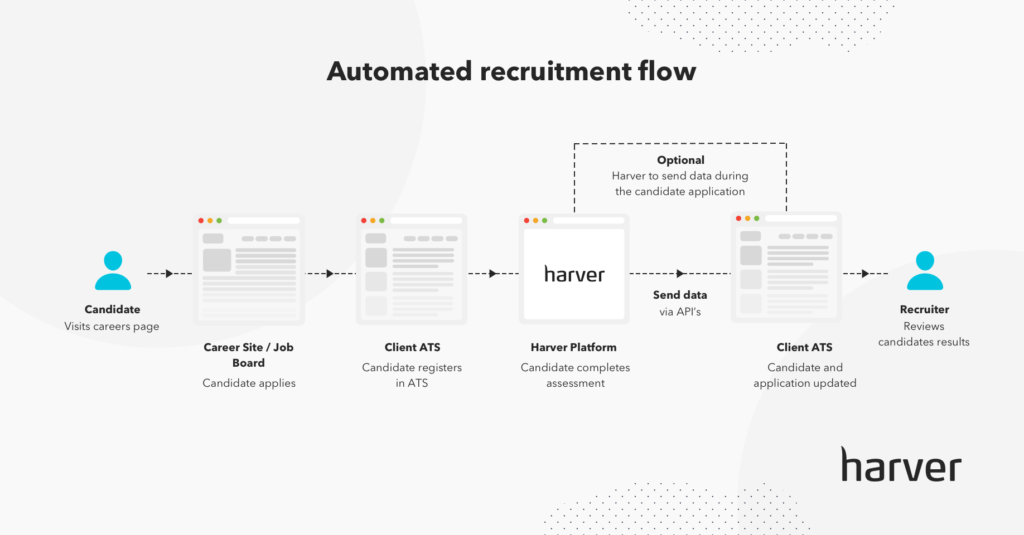
6. Workflow integration
Using tools and technology to make your life easier – and your hiring process better – is awesome. Just keep in mind that every new piece of tech you add needs to integrate with your other tools. Because if they don’t, it would only create extra issues and that would be bad for your overall efficiency.
Modern-day recruitment departments are moving towards a reality where they own a complete ‘tech stack’ to cover all their needs. Integration capabilities across tools are essential here.
Recruitment data
Recruitment data is key to making the right hiring decision. We all use a resume and cover letter to gather information about applicants, which is okay-ish. However, a resume only says so much about a candidate. And even then, everybody looks good on paper. So if there’s one thing to remember about data, it’s that it needs to be valid. Scientifically validated preferably.
So, how to go about collecting this data? Well, there are heaps of ways, some better than others. Think of social media scraping or keyword analysis in resumes for example.
If you want to get reliable results though, you need reliable input. There’s a saying in data science: ‘Garbage in, garbage out.’ Meaning, if you use garbage data, you’re going to get a garbage result. So you need to provide yourself with validated data, and the best way to do that is via scientifically validated assessments.
These assessments are tried and tested continuously and are the most effective in getting valid data for making hiring decisions. In candidate selection, in general, there are a few domains you want to have data on in order to be able to paint a complete picture of a candidate.
1. Cognitive ability test
Assessing the level at which a candidate learns, solves problems, and understands instructions – also referred to as Cognitive Ability or General Mental Ability (GMA) – is a high predictor of success across a large pool of job families.
After all, the matter in which a candidate shows cognitive ability and problem-solving ability directly relates to on-the-job performance in many cases.
There are various ways to assess cognitive and problem-solving abilities, but the trick here is to try and make it fun. One way to do this is by creating a mixture of gamified assessments that challenge the cognitive abilities of a candidate in an engaging way.
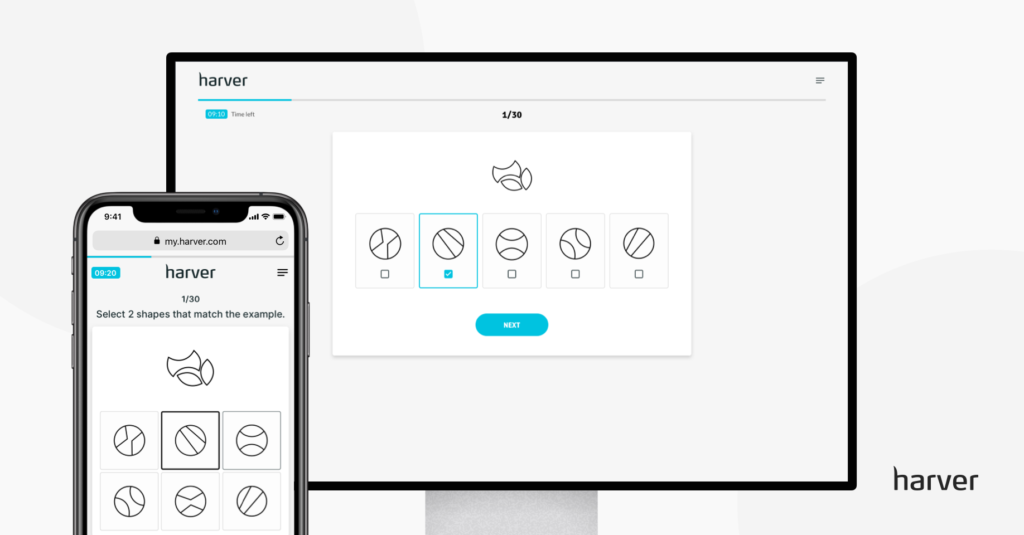
2. Personality questionnaire
Personality largely influences how someone will perform in a role. However, it’s also one of the hardest things to measure and evaluate.
Why, you ask?
Because there are so many factors that determine one’s personality that not all of them are fit for candidate selection.
Luckily, there is a general consensus in the academic world that some personality questionnaires do provide valid data when it comes to candidate selection; the Big 5 personality questionnaire and derivatives of this framework like HEXACO, TIPI, and others, for example.
Why are these considered valid and others less so? Because they rank someone’s personality on a scale instead of putting people in boxes.
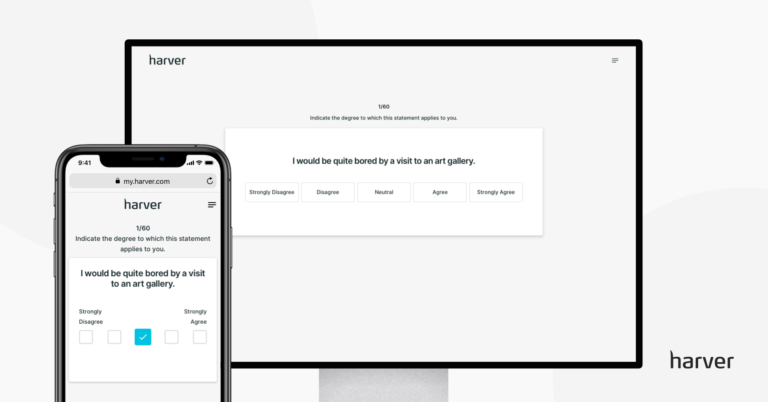
Personality questionnaires are tricky in terms of validity. Be sure to look for a questionnaire that works with a scale instead of types/colors/domains such as the HEXACO personality questionnaire like Netflix did.
3. Culture fit test
Although in many organizations culture fit is used as an umbrella term for a candidate’s soft skills, there are actually scientifically validated ways to measure culture fit as well.
The Organizational Culture Assessment Instrument (OCAI), for instance, uncovers a candidate’s cultural tastes across six key dimensions of organizational culture through a questionnaire and compares it to the situation at your organization.
Not to say that your typical culture questions don’t have their place in the selection process. They do. But if you really want to assess culture fit in a validated way, try combining your culture-focused interview questions with an instrument like the OCAI.
4. Situational judgement test (SJT)
Situational Judgement Tests are all the rage nowadays, and for a good reason.
First off, an SJT provides candidates with an idea of what they can expect from the job and is part of the overall Realistic Job Preview you should provide in a future-proof candidate selection process. Second, if constructed properly – an SJT is a strong indicator of job performance and culture fit.
For your generic SJT, you need an IO-Psychologist, a designer and a developer, plus a budget to get them all to work. But if you’re in the high volume hiring game, or heavily rely on culture fit, they’re definitely worth the trouble.
Below you can see a sample SJT developed for a contact center client. This type of pre-employment assessment gives candidates a clear preview of the job, while assessing their skills and scoring them in the background.
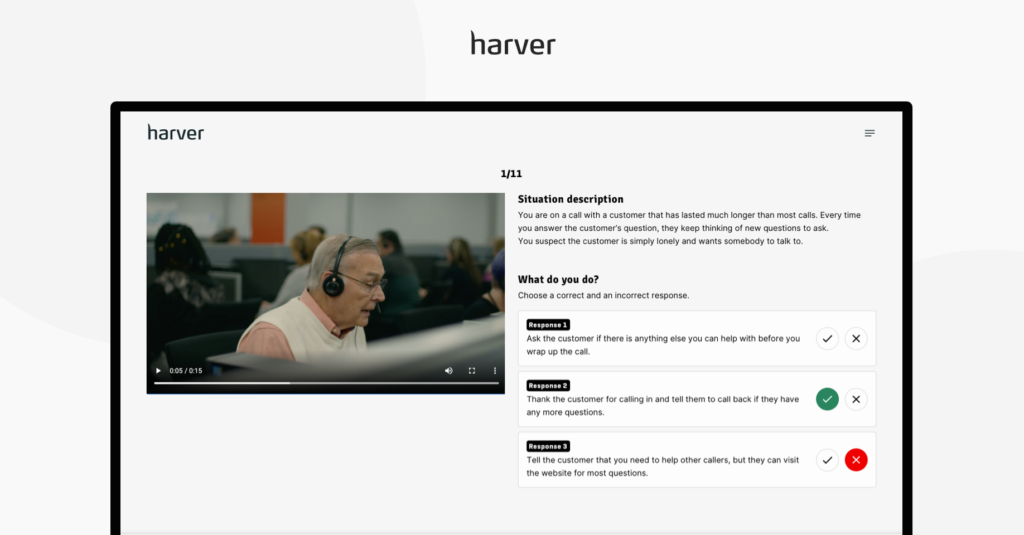
If you’d like to see how an application flow – including an SJT – could look like for your company, you can book a demo below.
Ready to transform your hiring process?
5. Skills
Besides culture fit, personality and cognitive ability, you want to know if someone possesses the right skills for the job.
Although there are ways to measure generic skills like typing, multitasking, language proficiency etc., in the end, it depends on the job family and/or role you’re hiring for. After all, the skills you assess should be connected to the job.

Candidate experience
Those who are your candidates today may be your customers tomorrow. That’s why the third pillar in a 21st-century candidate selection process is candidate experience. Here’s how to do it right.
1. Realistic job previews (RJPs)
Realistic job previews are a great way to give your candidates an honest look inside your organization.
A ‘behind the scenes’ kind of video showing both the good and the bad, in combination with an SJT can truly give applicants a sense of what it is like to work in your company. It also offers them a taste of the organizational culture and, of course, the job they might end up doing.
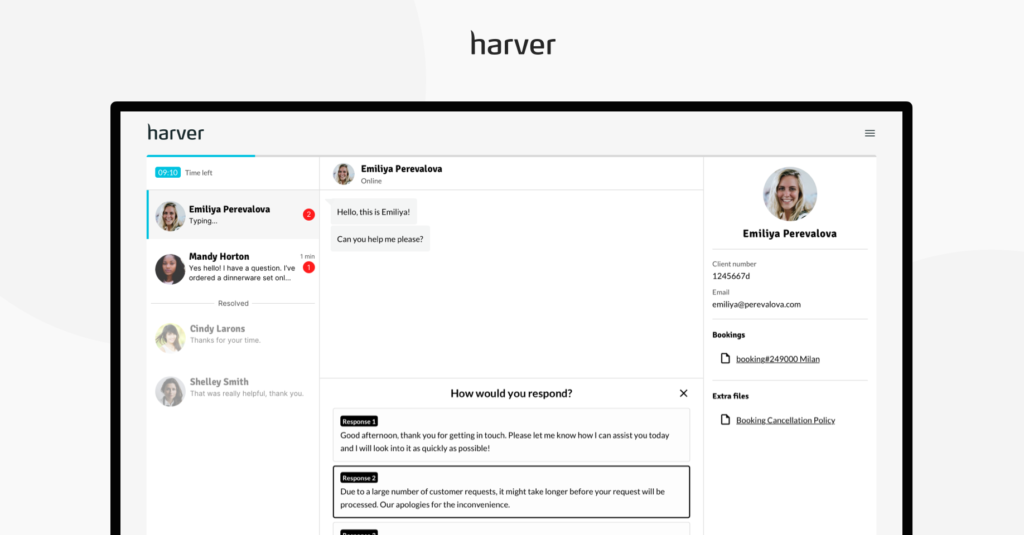
Giving a realistic job preview is one of those things that should always rank high on the effort vs. impact list. Global hospitality leader HMSHost restructured its candidate selection process with an emphasis on providing an RJP. As a result, employee turnover decreased by 38%.
For example, when assessing candidates for contact center or BPO roles, it’s useful to test their skills with a chat simulation test. This mimics a real-life situation that they’d have to face in the job: offering support to multiple customers at the same time, and doing it in a stressful environment, where the reaction time and the friendliness matter.
Below you can see what our Live Chat Simulation Module looks like.
Experience our best-in-class Live Chat Assessment first-hand!
Perfect for remote hiring, our live chat assessment makes it easier than ever to hire live chat agents. Candidates experience the job, while you get actionable data to drive hiring decisions.
2. Feedback
There’s nothing worse for a candidate when, after they’ve put their heart and soul (and precious time) into an application process they don’t hear back from you.
Feedback should be a key part of any modern candidate selection process. Let your candidates know how they did. Regardless of what stage of the selection process they made it to.
Did they go through an online assessment? Share their assessment results with them so they know their strengths and weaknesses and can use this to improve next time around.
Oh yes, one more thing. Don’t forget to ask your candidates for their opinion on your selection process!

The Harver platform, for example, asks candidates to share their feedback at the end of the application procedure, so that you can easily identify the stages in the recruitment funnel that require more attention.
3. Instant communication
21st-century candidates are always switched on. Waiting for a company to come back to them regarding a simple question is the last thing they want to be doing.
Best case scenario: they’ll think your candidate experience was so-so. Worst case scenario: they’ll move on to one of your competitors.
In other words: make sure you communicate in a timely (perhaps automated) manner and keep your candidates engaged throughout the entire selection process.
4. Intuitive UX
The bar for today’s ‘standard’ user experience is pretty high. Think of applications such as Uber, Snapchat, and Netflix. Candidates are used to these kinds of super smooth, intuitive user experiences.
And they expect nothing less from their work environment.
As soon as a candidate applies for a job in your organization, they get a taste of your company’s tech status, so to speak. If you want to stand a chance in attracting the top talent of tomorrow, you better make sure you’ve got a top-notch UX.

For example, in the Harver platform, you can build an application flow that includes a company video to showcase the culture and work experience, an SJT (situational judgement test) to assess the candidate’s fit for the role, a personality test to assess their culture fit, and the option to automatically schedule an interview if the candidate fits the requirements.
5. Mobile friendly & multi-device
This goes hand in hand with an intuitive UX. Today’s job seekers, especially Generation Z and beyond, manage every aspect of their lives with their smartphones. That includes their career.
A mobile, multi-device proof application process is not a nice-to-have, it’s a must-have when you want to build a modern selection process.

9 in 10
job seekers are likely to use a mobile device during their job search.
Source: Glassdoor
Next steps
A 21st-century recruitment process should be based on three pillars: efficiency, data, and candidate experience. If you optimize each pillar – and keep doing so based on the results you get – you’ll be able to build an agile selection process that helps you attract and select top candidates.
Efficiency-wise, streamline your multi-sourced candidate flow, automate messaging, and automate manual tasks. In terms of data, the most important thing to keep in mind is to use valid data. If you use a pre-employment assessment in your selection process, be sure to check that vendor uses scientifically validated assessments.
On a candidate experience level, the key ingredients are instant communication, a smooth UX, feedback, and the management of expectations about the job and the company.
Modernizing your candidate selection process isn’t something that has to happen overnight. But it’s a must if you want to align your recruitment process to current candidate expectations, and to future-proof it.
Ready to transform your hiring process?
